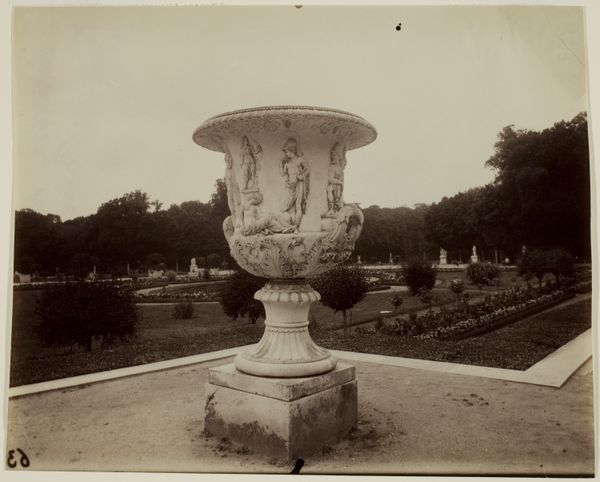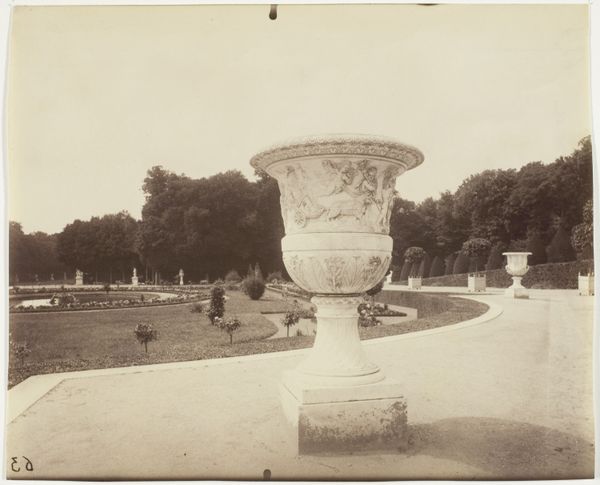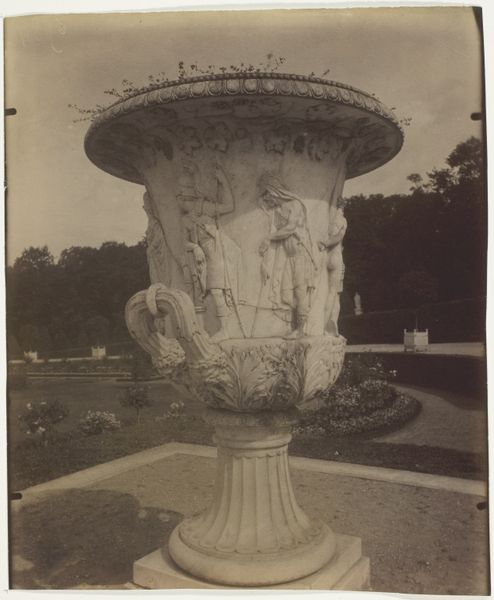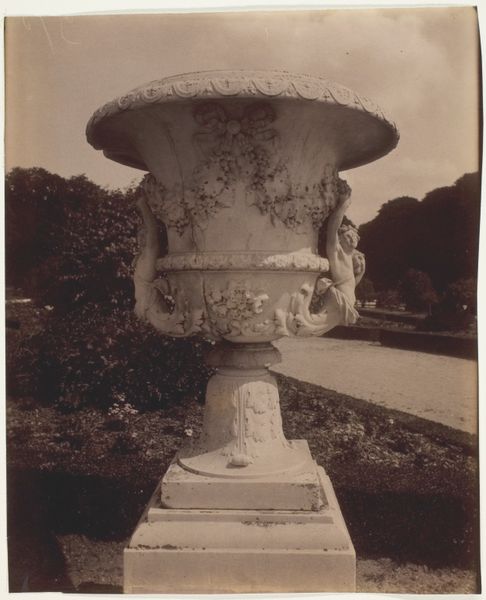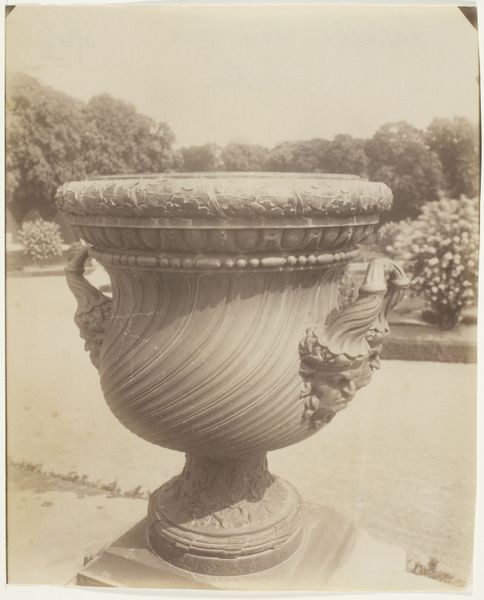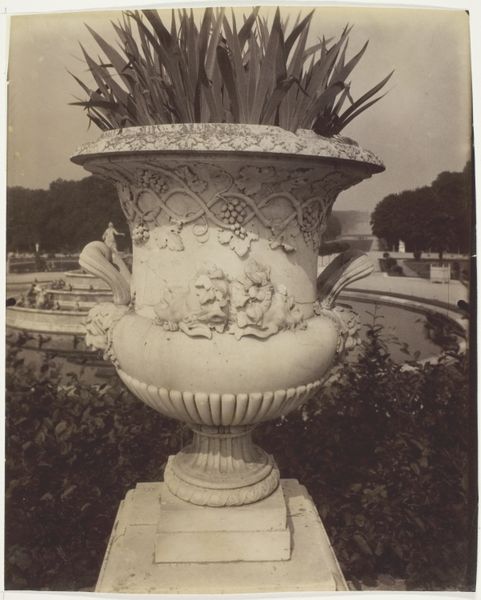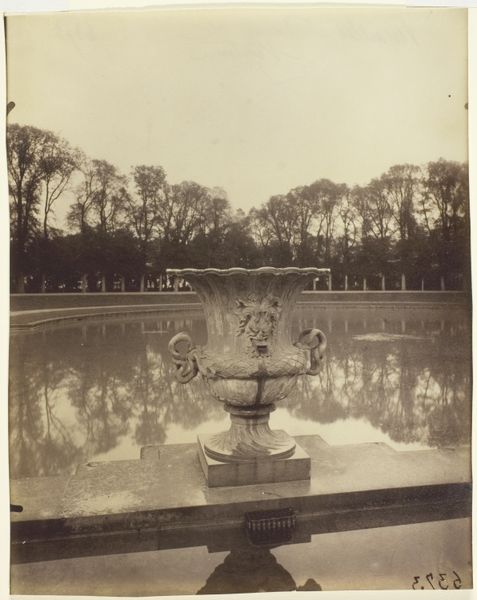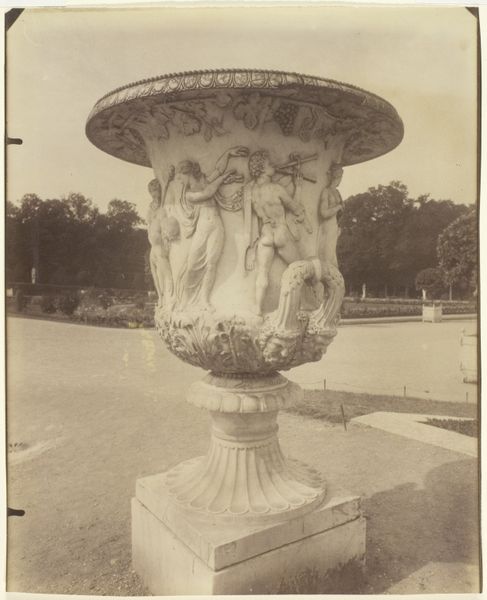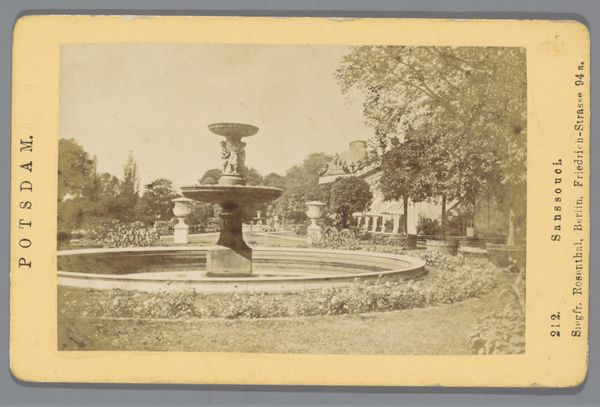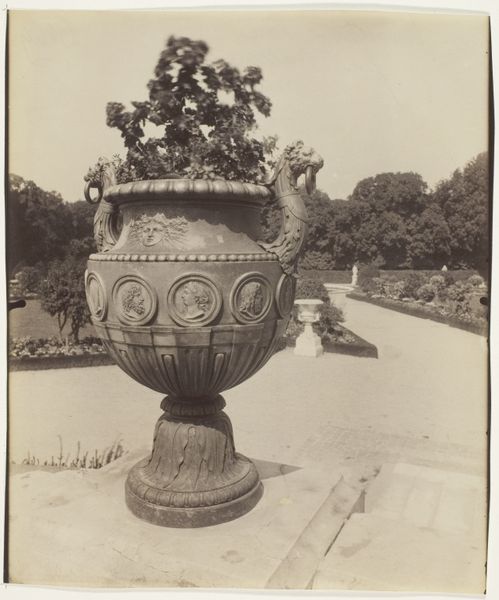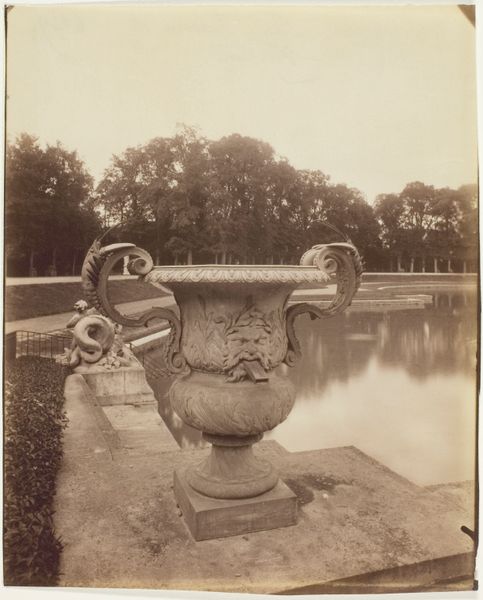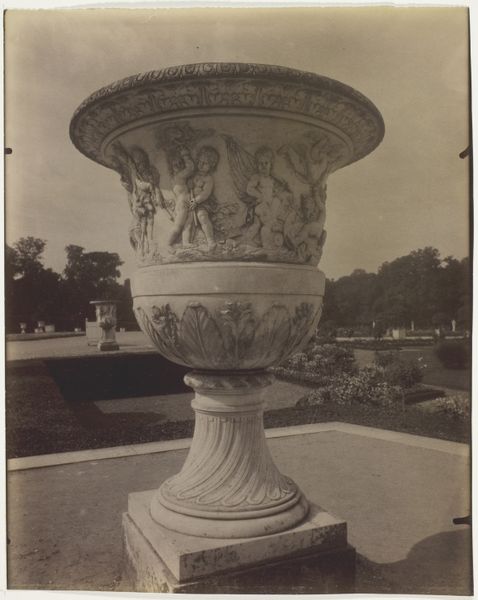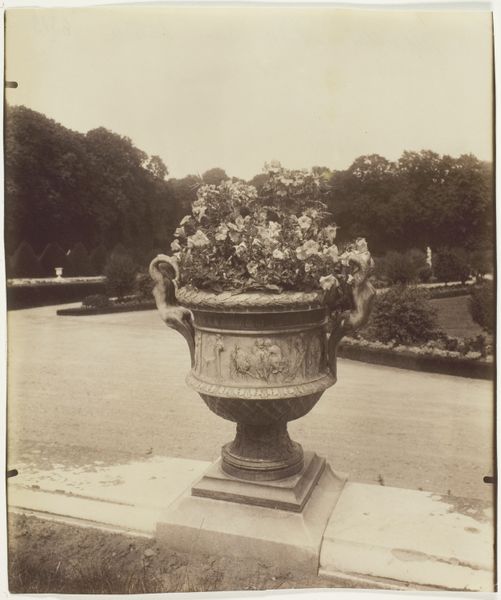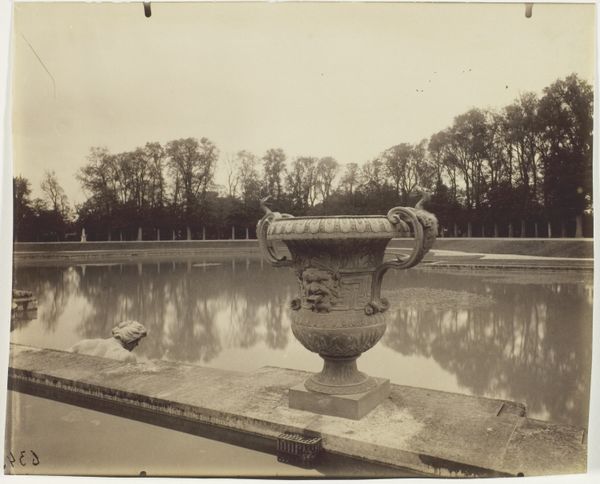
silver, print, photography, sculpture
#
still-life-photography
#
silver
# print
#
landscape
#
classical-realism
#
outdoor photograph
#
photography
#
historical photography
#
sculpture
#
france
#
men
Dimensions: 17.2 × 21.6 cm (image/paper)
Copyright: Public Domain
Curator: This silver print by Eugène Atget, taken in 1902, presents a rather monumental vase in the gardens of Versailles. Entitled "Versailles, Vase par Cornu", it's part of Atget's extensive documentation of Parisian and surrounding areas. Editor: There's a certain melancholy about this image, a quiet grandeur. The vase dominates the foreground, its details softened by the photographic process. It almost feels like a monument to a bygone era, carefully framed by the gardens around it. Curator: Absolutely, the formal gardens of Versailles, the very seat of power for centuries of French monarchs, speak volumes about societal structure, artistic patronage, and the careful construction of an image. Consider how the aristocracy commissioned pieces celebrating themselves, crafting narratives of strength, virtue, and authority. Editor: I think the vase also invites considerations about gender. I wonder how many of the sculptures included women, and how did these figures function to shape gender norms and class roles. Curator: Exactly. The imagery decorating the vase would likely pull from classical or allegorical themes, projecting specific values onto its aristocratic patrons. Think about how idealized notions of womanhood, often linked to reproduction and domesticity, reinforced the patriarchal power structures of the time. Furthermore, Versailles itself became a potent symbol after the French Revolution. Atget capturing it underscores photography’s crucial role in shaping our understanding and remembering. Editor: The angle also seems crucial, it is the gaze of the photographer who decides the point of view, and its aesthetic language and representation in culture that must be analyzed and interpreted. The way the image seems aged by sepia tones it is something of concern since that color pallet recalls us an alleged historical value that has been discussed by diverse academic theorists such as Susan Sontag. Curator: That perspective is very much needed. Overall, Atget's photograph prompts us to confront the enduring impact of art as both a reflection and a reinforcement of historical and social inequalities. Editor: I will take with me the challenge of always question the aesthetic language that constructs the alleged 'objective' photography value as the key element to understand how a historic event took place.
Comments
No comments
Be the first to comment and join the conversation on the ultimate creative platform.
